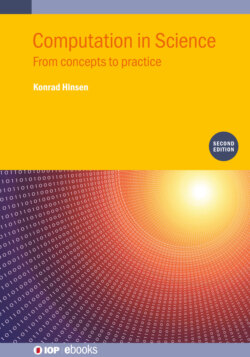Читать книгу Computation in Science (Second Edition) - Konrad Hinsen - Страница 15
На сайте Литреса книга снята с продажи.
Computation as a model for information processing in nature
ОглавлениеComputers are physical devices that are designed by engineers to perform computation. Many other engineered devices perform computation as well, though usually with much more limited capacity. The classic example from computer science textbooks is a vending machine, which translates operator input (pushing buttons, inserting coins) into actions (deliver goods), a task that requires computation. Of course a vending machine does more than compute, and as users we are most interested in that additional behavior. Nevertheless, information processing, and thus computation, is an important aspect of the machine’s operation.
The same is true of many systems that occur in nature. A well-known example is the process of cell division, common to all biological organisms, which involves copying and processing information stored in the form of DNA [8]. Another example of a biological process that relies on information processing is plant growth [9]. Most animals have a nervous system, a part of the body that is almost entirely dedicated to information processing. Neuroscience, which studies the nervous system, has close ties to both biology and computer science. This is also true of cognitive science, which deals with processes of the human mind that are increasingly modeled using computation.
Of course, living organisms are not just computers. Information processing in organisms is inextricably combined with other processes. In fact, the identification of computation as an isolated phenomenon, and its realization by engineered devices that perform a precise computation any number of times, with as little dependence on their environment as is technically possible, is a hallmark of human engineering that has no counterpart in nature. Nevertheless, focusing on the computational aspects of life, and writing computer programs to simulate information processing in living organisms, has significantly contributed to a better understanding of their function.
On a much grander scale, one can consider all physical laws as rules for information processing, and conclude that the whole Universe is a giant computer. This idea was first proposed in 1967 by German computer pioneer Konrad Zuse [10] and has given rise to a field of research called digital physics, situated at the intersection of physics, philosophy, and computer science [11].
